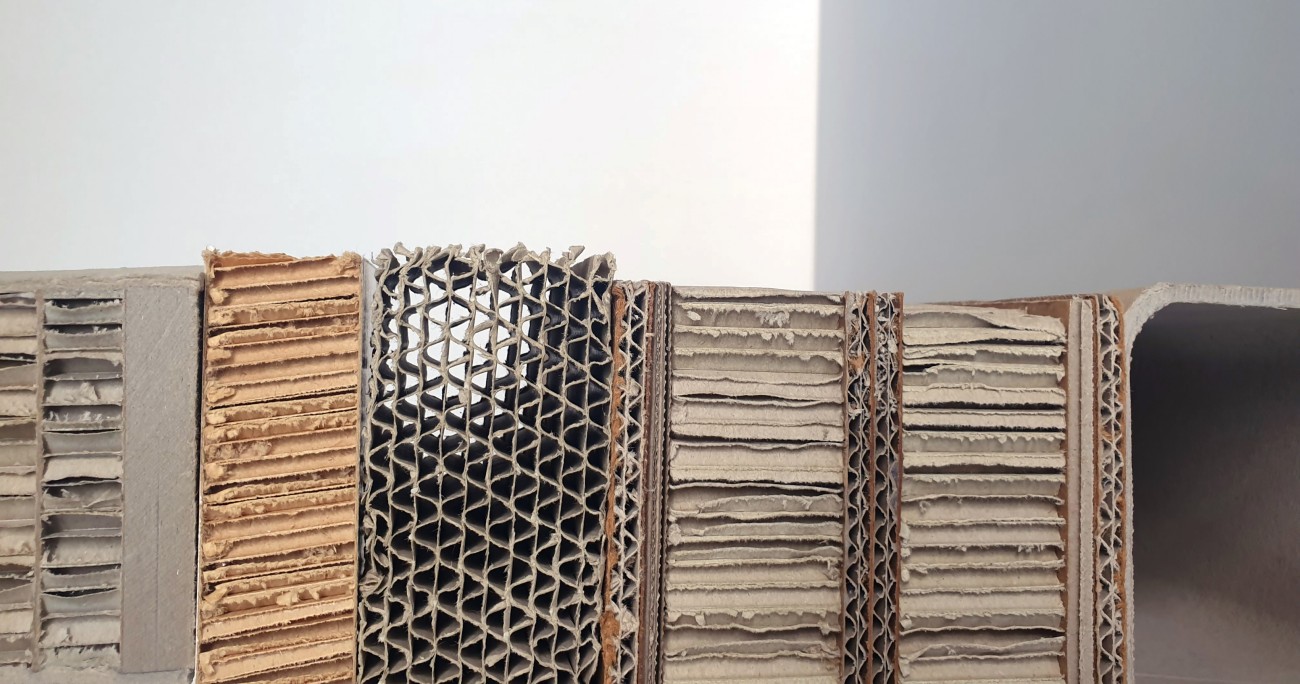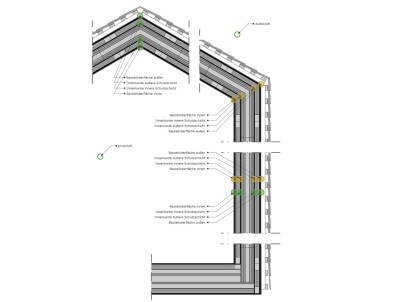Textbook with Basics from Research to Practice
Paper and cardboard as sustainable building materials are currently the subject of research and testing. They can be produced inexpensively, are made from renewable raw materials and are completely recyclable. The focus of their application is on temporary uses, such as for transitional schools, emergency shelters or “microhomes”. Properly protected from moisture and fire, the material proves to be durable. Design and aesthetic qualities are by no means neglected, as case studies by Pritzker Prize winner Shigeru Ban demonstrate: the Chengdu Elementary School, the Paper Concert Hall in Aquila or the Cardboard Cathedral in Christchurch all provided a sign of hope after devastating earthquakes. This introduction explains the technology of building with cardboard and paper and shows a wide range of examples.
Paper as a material
As a substitute material, paper offers excellent potential for more environmentally friendly and thus more sustainable construction. It is a lightweight material in which its fibers – unlike in wood – can be arranged and functionalized. The production of paper can now be considered highly efficient and optimized. To date, it has only been used in simple applications in the construction sector. Components and façade construction systems need further investigation with the aim of finding innovative solutions for the future.
It is well known that future generations will rely on the consumption of renewable resources. The building sector can contribute in this regard not only to reducing the consumption of natural resources, but also to the recycling process. To illustrate this: Not only does heating buildings require significant amounts of energy, building materials such as concrete or polystyrene lead to high CO2 emissions and environmental pollution. Due to global population growth, mineral building materials will no longer be able to meet the demand for housing in terms of energy requirements and availability in the long term.
Dr. Nadja Bishara,
Research Group Leader Building with Paper
In addition to constructive feasibility studies, our main focus is on the experimental and numerical analyses of the load-bearing behavior and structural-physical parameters of components made of paper.

Paper is a new material for the construction sector, for which no defined and standardized techniques for the use of a building material exist to date. Paper is a cost-efficient building material and, therefore, promotes affordable construction. Furthermore, temporary paper constructions contribute to coping with demographic change using circular temporary building constructions. This can be realized by closing temporary gaps between buildings and expanding buildings by creating temporary living and working spaces. The influence of humidity and temperature is particularly important to determine the durability of paper constructions.
For exterior wall systems, there is a wide range of solutions on the market. In general, monolithic, layered and skeletal constructions. Mineral, metallic, petroleum and wood-based building materials are common. Often, a combination of the mentioned materials is used. The production of purely mineral systems is associated with a high CO2 footprint. With other systems, it is often difficult to separate the composite and layered structures by type, which is particularly problematic from a recycling point of view. The use of paper building materials as exterior walls is a very new field of application. The project is considered to target the market of individual house construction, specially prefabricated, through the design of functional paper mono-material constructive systems. This would address the market demand for a recyclable and prefabricated mono-material building product made of paper for use as an exterior wall.
The pressure on the housing market as well as the environmental concerns lead to an increasing demand for cost-efficient and sustainable constructions. Germany is facing a shortage of 700,000 apartments by 2023, which will be exacerbated by rising rent and commodity prices. Paper-based Tiny Houses can contribute to alleviating the housing shortage and rising real estate prices, as they are flexible, quick, and cost-effective. The Tiny House movement has its origin in the USA and increases in popularity in the European market. This movement offers affordable, temporary living space for professionals, students, and refugees as well as alternative housing options.


Head
| Name | Contact | |
|---|---|---|

| Dr. Nadja Bishara Paper Construction and Design | bishara@ismd.tu-... |

| Prof. Dr.-Ing. Michael Kraus Chair of Structural Analysis | kraus@ismd.tu-... +49 6151 16-23013 L5|06 620 |
Team
| Name | Contact | |
|---|---|---|

| Inés Burdiles M.Sc. | burdiles@ismd.tu-... +49 6151 16-23017 L5|06 416 |

| Naomi Bosse M.Sc. | bosse@ismd.tu-... +49 6151 16-23017 L5|06 416 |

| Henriette Hoffmann M.Eng. | hoffmann@ismd.tu-... L5|06 416 |










